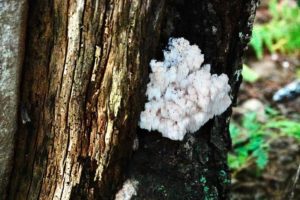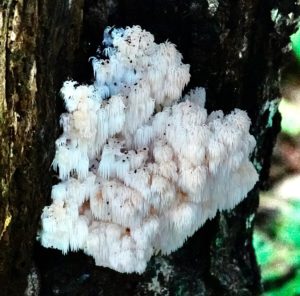Bear’s Head Tooth Fungus – 10/6/21
Observer: Paul Lauenstein
Observation Date: 10/6/21
Observation Time: 3:00 p.m.
Observation Location: Near the footbridge over Beaver Brook near the outbound train station
Common Name: Bear’s Head Tooth Fungus (a.k.a. Lion’s Mane or Comb Tooth)
Scientific Name: Hericium americanum
Comments: While driving very slowly along the dirt road from the outbound train station parking lot to the footbridge over Beaver Brook, I almost drove past this bizarre fungus growing on a dying tree trunk. This year was exceptionally wet, which has led to more mushrooms than usual this fall.
Bear’s Head Tooth Fungus is native to eastern North America. It was first scientifically described by James Ginns of Canada in 1984. Bear’s Head Tooth Fungus grows on both rotting and living wood, mostly hardwood, and they are typically seen in the wild during the late summer and autumn months, though they are able to be cultivated.
Young Bear’s Head Tooth Fungus can be cooked and eaten, having a taste comparable to that of lobster, though once picked the fungi do not store well, and need to be consumed within a couple of days. Otherwise they will become bitter. High amounts of vitamin D are found in Bear’s Head Tooth Fungus, and it also contains significant quantities of protein and fibre, as well as other beneficial health properties that are still being understood. However, I never eat mushrooms or fungi that I find in the wild. With plenty of mushrooms available in the supermarket, I don’t think it’s worth the risk.
More Information: Wikipedia and ediblewildfood.com


